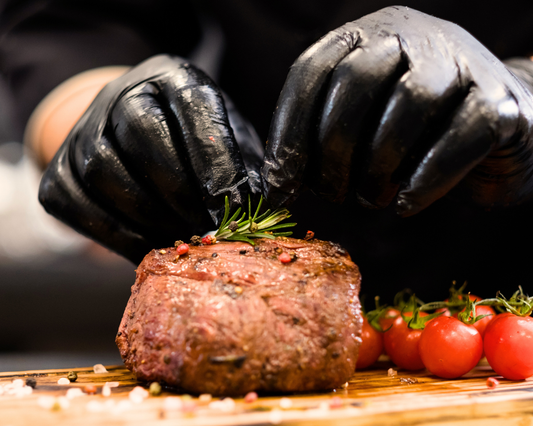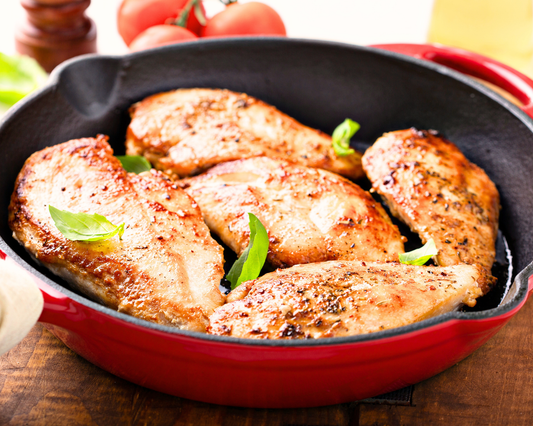When it comes to grilling, roasting, or slow-cooking indulgent, meaty dishes, few cuts can compete with ribs. Whether you’re a barbecue enthusiast or a home cook who enjoys hearty, satisfying meals, pork back ribs and beef ribs both bring incredible flavour to the table. But which is better suited to your tastes and lifestyle?
In this comparison, we’ll explore the flavour profiles, versatility, and nutritional benefits of pork and beef ribs, helping you decide which one deserves a spot on your table.
Flavour: Sweet and Tender vs Bold and Hearty
The biggest difference between pork and beef ribs starts with flavour and texture.
Pork Back Ribs
Pork back ribs—also known as baby back ribs—come from the upper part of the pig’s rib cage near the spine. These ribs are shorter, leaner, and naturally tender. The meat is slightly sweet and mild, which makes it an excellent canvas for marinades and sauces.
Because pork has a subtler flavour, it easily absorbs whatever seasoning you use—whether it’s smoky barbecue sauce, maple-glazed rubs, or a tangy mustard base. When cooked low and slow, the meat pulls away from the bone with just the right amount of chew.
They’re perfect for those who prefer balanced, fall-off-the-bone tenderness and a hint of sweetness.
Beef Ribs
Beef ribs, on the other hand, are rich, bold, and deeply savoury. They come from the cow’s rib section, and depending on the cut, they may be either short ribs (cut from the lower rib cage) or back ribs (closer to the spine).
Beef ribs offer a deep umami taste that stands up to heavier seasonings and smoke. The meat is fattier and denser than pork ribs, resulting in a robust, meaty bite that’s deeply satisfying.
If you love hearty flavours and the primal joy of sinking your teeth into thick, juicy ribs, beef is your best choice. They pair beautifully with bold rubs, red wine marinades, or simple salt-and-pepper seasoning.
Versatility: Cooking Styles and Meal Ideas
Both pork and beef ribs shine in different types of dishes and cooking methods.
Pork Back Ribs: Everyday Crowd-Pleaser
Pork back ribs are incredibly versatile for both summer and winter cooking. They’re ideal for:
-
Oven-baked comfort meals: Season with your favourite spice blend, cover with foil, and bake low and slow for tender, juicy results.
-
Grilled and glazed barbecue feasts: Brush with maple or honey garlic sauce for a sticky, flavour-packed crust.
-
Air fryer or Instant Pot recipes: Perfect for busy weeknights when you want quick, wholesome meals without sacrificing taste.
Because they’re lighter and leaner, pork ribs also pair well with fresh salads, roasted vegetables, or simple potato sides.
Beef Ribs: The Show-Stopping Favourite
Beef ribs are the ultimate choice for slow cooking and smoking. Their marbling and thickness make them perfect for:
-
Smoked barbecue platters: Cooked over low heat for hours, the fat renders beautifully and creates melt-in-your-mouth texture.
-
Braised dishes: Slow-cooked in red wine, broth, or tomato sauce, beef ribs deliver rich, comforting meals ideal for colder months.
-
Grilled rib feasts: When finished over an open flame, they develop a caramelized crust that enhances their meaty depth.
Beef ribs are excellent for special occasions or when you want to impress guests with something bold and hearty.
Nutrition: Comparing the Health Benefits
Both pork and beef ribs can be part of a nutritious diet, especially when sourced from high-quality, naturally raised animals.
Here’s how they compare nutritionally:
Pork Back Ribs
-
Lean protein: A great source of complete protein to support muscle growth and recovery.
-
Lower fat content: Especially when trimmed and baked instead of fried or glazed with sugar-heavy sauces.
-
Rich in vitamins and minerals: Contains zinc, phosphorus, B6, and B12 for energy and immune support.
If you’re aiming for a lighter protein that’s still satisfying, pork back ribs offer a balanced option without feeling overly heavy.
Beef Ribs
-
Higher protein and iron: Excellent for energy production, red blood cell formation, and supporting an active lifestyle.
-
Healthy fats: When sourced from grass-fed beef, the fat contains omega-3 fatty acids and conjugated linoleic acid (CLA), both beneficial for heart and joint health.
-
Dense and satiating: Keeps you full longer, making it a great choice for athletes or anyone with higher calorie needs.
While beef ribs are richer, they can fit beautifully into a balanced diet when enjoyed in moderation alongside fresh vegetables or whole grains.
Choosing What Fits Your Taste and Lifestyle
If you’re looking for:
-
Tender, subtly sweet meat that cooks quickly and absorbs marinades beautifully → go with pork back ribs.
-
Deep, hearty flavour that shines in slow-cooked or smoked dishes → choose beef ribs.
Many Canadians enjoy alternating between the two—pork ribs for weekday dinners and beef ribs for special weekends or gatherings. Both deliver excellent protein quality, comfort, and flavour.









